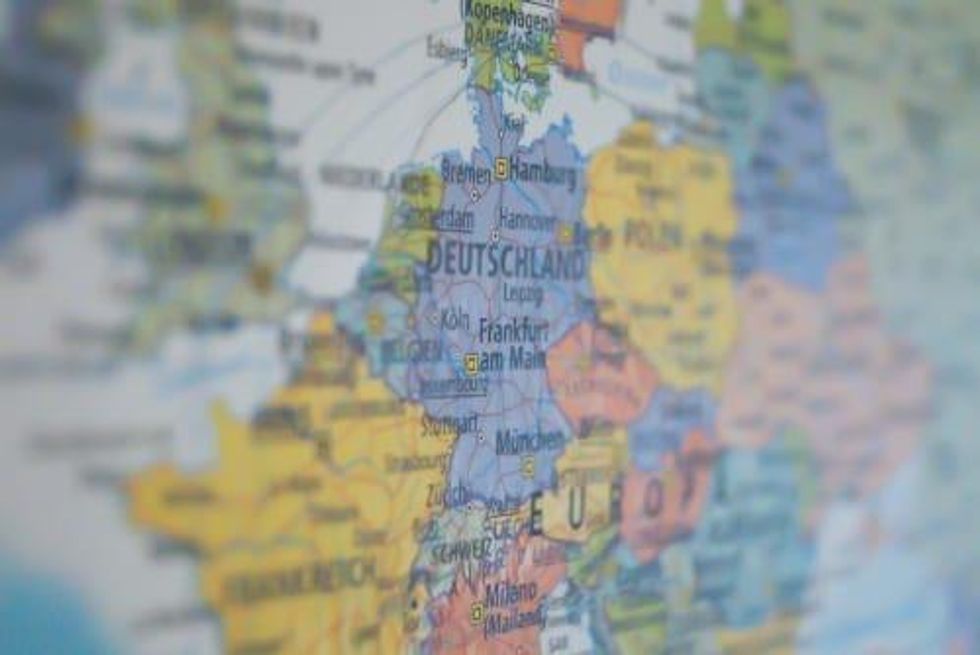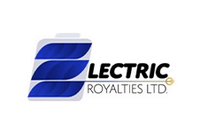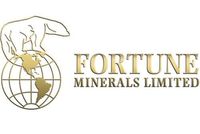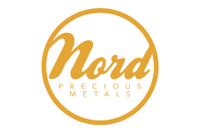
The Investing News Network looks at the geological landscape for cobalt in Europe, the region’s refining capabilities and what’s ahead.
As interest in electric vehicles (EVs) continues to pick up pace around the world, the question of supply for key raw materials such as cobalt remains.
Like other regions, Europe is taking steps to build its own EV supply chain — or take as much control of it as it can. From producing actual EVs to getting battery megafactories up and running, the region is pushing forward with its green agenda.
Here the Investing News Network (INN) looks at the geological landscape for cobalt in Europe, its refining capabilities and the next steps for the area in terms of the critical metal.
Building a local cobalt supply chain in Europe
Cobalt is an essential element for the lithium-ion batteries used to power electric cars. But how possible is it for Europe to take further ownership of cobalt mining and refining?
The EU includes cobalt on its list of critical raw materials, so it understands both its economic importance and potential supply risks, Greg Miller of Benchmark Mineral Intelligence told INN.
“I think the EU can move to secure cobalt units, although other governments, particularly the Chinese, are locking up resources,” Miller said. “There is limited risk in this, and a much bigger risk to not protect regional interests internationally.”
Benchmark Mineral Intelligence estimates that European cobalt demand for transportation will increase by around six times from 2020 levels to 2025.
While there are a number of existing cobalt projects and more under development, they will not be enough to meet European demand, Miller said.
“As such, Europe is unlikely to become entirely self-sufficient, but it can take steps to reduce dependence on imports,” he added. “These include expanding cobalt production at existing operations, building more refining capacity and the development of cobalt recycling capacity.”
However, Europe remains so far behind China throughout the supply chain that it is unlikely to take back control, Miller said. China has a dominant position in cobalt refining capacity; it will account for over 70 percent of global refined output in 2021, while Europe will only account for 14 percent.
Looking at the EV demand landscape in the region, CRU Group’s most recent forecast estimates sales of just under 4 million new EV units in Europe by 2025. This would require 35,000 tonnes per year by 2025, assuming that all cobalt contained in European EVs is consumed in Europe.
“That implies that either significantly more refinery capacity will be required; (that) Europe will need to import large quantities of cobalt chemicals; or (that) battery cathodes will be made elsewhere and shipped to Europe,” Harry Fisher of CRU Group told INN.
At present, most cobalt is mined in the Democratic Republic of Congo (DRC), shipped to China and processed into battery chemicals before either being consumed domestically or shipped elsewhere.
“This refinery capacity is in China largely for legacy reasons — but as the battery value chain becomes increasingly regionalized, there is no reason why it necessarily needs to stay this way,” Fisher said. “Given the rate at which we expect regionalized cobalt demand to grow, there is a strong case for regionalized supply of battery chemicals.”
Cobalt mining in Europe
As mentioned, right now Europe mainly sources its cobalt ores, concentrates and intermediates from the DRC, the world’s top cobalt producer, with Europe’s reliance on imports set at about 86 percent. The remaining cobalt is sourced domestically from Finland.
When looking at cobalt mining in the EU, mine production is quite small at nearly 2,000 tonnes per year, representing a share of about 1.5 percent of total global mining.
“There’s certainly opportunities to expand mined production at existing projects, such as in Finland and Turkey,” Miller said. “There are also a handful of countries with known deposits, with some under development, but relatively few.”
Aside from several nickel-cobalt sites in Scandinavia, Europe’s geology is not well-suited to cobalt mining at long-term historic prices, Fisher pointed out. “It cannot compete with the sheer quantity and quality of mining reserves in the DRC, and this is unlikely to change anytime soon unless we see a permanent step change in cobalt prices (which is unlikely),” he added.
Most of Europe’s cobalt resources and reserves are located in Nordic countries, but resources of cobalt are also known to exist in Greece, Spain and Poland.
Exploration projects targeting cobalt among other metals exist across the EU, mainly in Finland and Sweden, but also in Slovakia, Germany, Spain, Cyprus, Austria, Poland and Czechia.
A recently published study from the British Geological Survey highlights the presence of substantial cobalt resources distributed widely across Europe in a variety of deposit types. The study identifies 104 deposits in Europe that are currently being explored for cobalt, of which 79 are located in Finland, Norway and Sweden.
However, further research and investment is required to prove the economic viability of these deposits. Additionally, it is important to note that data is unavailable for several countries and reporting standards are difficult to compare.
Here is a brief overview of the main countries with cobalt resources within the EU, using data from the EU Commission’s study on critical raw materials.
Finland
Finland is the only country within the EU that produces cobalt using ore from domestic mines. In fact, the largest cobalt resource in Europe is located at the Sotkamo (Talvivaara) polymetallic nickel-copper–zinc-cobalt sulfate deposit in Finland. The mine is operated by Terrafame, which is majority owned by the Finnish government through the Finnish Minerals Group.
Other significant deposits in Finland by tonnes of contained cobalt include Boliden’s (STO:BOL) Kevitsa nickel-copper-platinum-group metals and Kylylahti copper-zinc deposits; Anglo American’s (LSE:AAL,OTCQX:AAUKF) Sakatti nickel-copper-platinum-group metals asset; Eurobattery Minerals’ (FWB:EBM) Hautalampi nickel-copper-cobalt deposit and Dragon Mining’s Juomasuo gold-cobalt deposit.
Sweden
In Sweden, total resources amount to about 20,000 tonnes of cobalt. The critical mineral has previously been mined at several places in the country, such as Los, Vena, Tunaberg, Gladhammar and Kleva.
The more advanced exploration projects in Europe are also located in Sweden, including Aura Energy’s (ASX:AEE) Haggan vanadium project and Archelon’s Ronnbacken nickel project, where cobalt is mined as a secondary commodity.
In terms of exploration and development, Australia-listed Talga Resources (ASX:TLG) currently has exploration permits at Kiskamarvaara and Ahmavouma. The company’s Kiskama copper-cobalt project has a total JORC-compliant resource of 7.7 million tonnes at 0.25 percent copper, 0.04 percent cobalt and 0.36 percent copper equivalent. Kiskama is considered Sweden’s largest cobalt deposit.
In addition to Kiskama, Talga owns other high-grade copper-cobalt-gold projects in North Sweden at an earlier stage of exploration, including the Aitik East project.
In Riddarhyttan, despite the field being dominated by iron ore, there is also copper, cobalt, rare earth elements, molybdenum and gold. EMX Royalty (TSXV:EMX,NYSEAMERICAN:EMX) currently has exploration permits in the area, with the Riddarhyttan project available for partnership. EMX acquired the Riddarhyttan license in 2016 while following up on historic iron mines with associated copper, cobalt and gold mineralization.
In Vena, the Geological Survey of Sweden has recently started a project that includes new sampling, mapping and collection of geophysical data.
Greece
In Greece, reserves reported for lateritic nickel deposits include almost 50,000 tonnes of cobalt, and mineral resources comprise an additional 79,000 tonnes of cobalt.
The main laterite deposits are Kastoria, which has a resource of 8.7 million tonnes at 0.06 percent cobalt; Agios Ioannis, with a resource of 43.6 million tonnes at 0.05 percent cobalt; and Evia, with a resource of 228.3 million tonnes at 0.05 percent cobalt. All are currently being operated by troubled Larco.
The company, one of the world’s biggest nickel producers, was liquidated last year following a decision by a European court, which said Greece had failed to recover 135.8 million euros of illegal state aid to the company. Last year, a special administrator was appointed to sell its assets in separate tenders.
Cobalt refining in Europe
It will come as no surprise to battery metals investors that China dominates the world’s refined cobalt production, accounting for almost half of the global total. However, compared to its role in cobalt mining, Europe is an important player in the refining of the battery metal, accounting for almost 14 percent of the world’s production.
In fact, Europe’s reliance on imports is about 27 percent, as the majority of cobalt refining used domestically takes place in Finland, followed by Belgium in a smaller percent.
In Finland, the Kokkola cobalt refinery produces battery-grade cobalt compounds used as precursors for cobalt-based cathode materials, among other products. In 2020, Umicore (OTC Pink:UMICF,EBR:UMI) reached an agreement to acquire Freeport Cobalt’s cobalt refining and cathode precursor activities in Kokkola, with Freeport Cobalt retaining the cobalt fine powders, chemicals, catalysts, ceramics and pigments located on the same site.
Norilsk Nickel (MCX:GMKN) operates the Harjavalta nickel refinery, also in Finland, which produces cobalt intermediates in the form of cobalt sulfate and cobalt solutions.
In Belgium, Umicore operates the Olen refinery, which produces refined cobalt in various forms, and in France Eramet (ERA:EPA) produces cobalt chloride at the Sandouville nickel refinery.
When asked about the possibility of Europe expanding its cobalt refining capacity, Miller was optimistic.
“Many European automakers are keen to secure more regional production for their battery supply chains,” he explained to INN. “The main challenges would be cost competitiveness versus low-cost Chinese refiners and raising capital in the public markets. Regulatory and permitting requirements in Europe will slow the process also.”
For his part, Fisher said the main challenge for Europe to increase its refined cobalt capacity is going to be sourcing a reliable long-term supply of traceable feedstock.
“There are only several DRC mining operations which can claim to have 100 percent guaranteed traceable supply, and several of these have already committed a lot of their volume in long-term supply deals (most notably Glencore (LSE:GLEN,OTC Pink:GLCNF)),” he added.
The case for cobalt recycling
When asked about the possibility of Europe taking a leading place in cobalt recycling, Fisher said recycling will be a vital source of domestic units of cobalt in the coming decades as the first waves of EVs start coming off the road, and will be key in improving Europe’s long-term cobalt supply security.
“However, it will take time,” he said. “We estimate that lithium-ion battery recycling is a relatively tiny industry in Europe at present, equivalent to just a few millions dollars a year in revenue; but this is projected to increase into the hundreds of millions by 2030. China is further ahead in terms of recycling, but capacity still remains limited.”
Similarly, Miller pointed out that as cells remain in use for more than 10 years, recycled supply in Europe will be limited in the near term, with the major local source of recycled cobalt being production waste from the growing number of new cell plants in the region.
“Once more significant volumes of cells start to return to market, it will be a key source of cobalt and other battery materials for Europe due to limited raw material production locally.”
Don’t forget to follow us @INN_Resource for real-time news updates!
Securities Disclosure: I, Priscila Barrera, hold no direct investment interest in any company mentioned in this article.
Editorial Disclosure: The Investing News Network does not guarantee the accuracy or thoroughness of the information reported in the interviews it conducts. The opinions expressed in these interviews do not reflect the opinions of the Investing News Network and do not constitute investment advice. All readers are encouraged to perform their own due diligence.


